BECOME A GAME WRITER
MONDAYS & WEDNESDAYS
6 PM AEDT
ON GAME WRITING
14 JAN 2026 - 23 FEB 2026
DURATION:
6 WEEKS
MONDAYS & WEDNESDAYS
6 PM AEDT
Build immersive worlds and character backstories, adapting your writing to every phase of development – and every type of player.
Learn to craft dialogue, hooks, and branching storylines with Kelsey Howard, a game writer & narrative designer of Master of Orion: Conquer the Stars, Overkill’s The Walking Dead, and Minecraft Dungeons.
THIS COURSE IS FOR YOU, IF...
-
YOU ARE A CREATIVE WRITER
Copywriter, journalist, editor, screenwriter – you’ve mastered words. Now it’s time to make them playable. We’ll show you how to write for games: where story meets system. You’ll learn how narratives branch, characters react, and player choice shapes the plot. Understand how writing fits into the dev process and turn your storytelling into worlds players can live in.
-
YOU ARE A GAME WRITER OR NARRATIVE DESIGNER
Already writing on an entry level, but want your stories to play out differently? This video game writing course takes your craft further. Learn to design branching narratives, write dialogue that drives emotion, and build character arcs that adapt to player choice. Plus, sharpen your cross-team collaboration skills, so you can speak “dev,” navigate bigger studios, and get ready for that next-level role.
-
YOU ARE READY TO SWITCH CAREERS
You’ve got the passion for the game, now let’s get to writing. This course gives you the roadmap. Learn how stories are built inside a studio, what makes game writing different, and how to turn your storytelling strengths into interactive experiences. From characters and quests to narrative systems, we’ll help you rewrite your career in the game industry.
Our students work in 1600+ companies worldwide
Look at every corner of video game writing and narrative design. From building worlds and branching storylines to crafting quests, characters, and dialogue that drive gameplay: every class delivers hands-on, industry-ready skills.
Learn how game storytelling works in real production. Break down case studies on Minecraft Dungeons, Cyberpunk 2077, Baldur’s Gate 3, and more. Understand game dev lifecycle & see how top studios bring story and gameplay together.
Final portfolio project: your own original game concept. You’ll outline its world, story hook, characters, environments, and sample script, ending the course with a polished, studio-ready game document you can use to showcase your skills.
KELSEY HOWARD
LINKEDIN PROFILE- Quest & Narrative Design Lead at Mojang Studios
- Leads narrative design at Mojang Studios, shaping story arcs, quests, and character experiences for Minecraft Dungeons
- Brings 11 years of industry experience spanning narrative design, creative writing, and story development across AAA and indie titles
- Holds a B.A. in English Writing & Rhetoric from St. Edward’s University in Austin, Texas – a foundation that fuels her narrative craftsmanship
- Began her career in an unexpected role – as a Military Research Assistant at Wargaming, uncovering historical documents from military archives to inspire authentic in-game storytelling
- Helped bring major titles to life, including: Master of Orion: Conquer the Stars (Game Writer, Wargaming.net, 2016), Overkill’s The Walking Dead (Lead Narrative Designer, Starbreeze Studios, 2018), and Minecraft Dungeons (Senior Creative Writer, Mojang Studios, 2020)

Your adventure begins. Meet your instructor and fellow storytellers as we set the stage for the weeks ahead. You’ll get an overview of the course journey, your final project, and what it means to write worlds players never want to leave.
- Meet your instructor
- Course structure
- Assignments
- Final project overview
Every game begins with a spark, but it’s the writer who gives it a soul. Learn how narrative fits within design and development, the tools you’ll need to thrive, and how today’s industry defines the storyteller’s craft.
- Game writer role
- Storytelling & context in video games
- Key skills
- The industry & its impact on writers
Understand the life cycle of game creation and how a writer’s responsibilities evolve from prototype to post-release. Then, study how Minecraft Dungeons shaped its story through each development stage.
- Game development process
- Game writer role: Development process
- Writing for different audiences
- Case Study: Minecraft Dungeons
Assignment #1: Overview Description Challenge
Choose a popular game and write an overview description of the game without telling us the title of the game… in a single paragraph! Write a paragraph for each audience and tailor it for them specifically.
Learn how to design story arcs that serve gameplay, balance pacing, and give players real agency. Study narrative triumphs (and missteps) from Overkill’s The Walking Dead and Cyberpunk 2077 to see how design and story intertwine.
- Overall story structure
- Plotting and pacing the story
- The importance of player choice
- Storytelling tips and tricks
- In-class discussion & reflection
- Case study: Overkill’s The Walking Dead, Cyberpunk 2077
From heroes with messy morals to NPCs who feel alive, great characters drive great games. Build multidimensional personalities, explore motivation and voice, and learn to make every line of dialogue matter.
- What makes a character stand out
- Character backstory and history
- Developing character arcs
- Non-player characters
- Case Study: Overkill’s The Walking Dead, Dragon Age: Inquisition
Assignment #2: Character Motivation & Voice Development
Create your hero in a fantasy world on the brink of destruction. Define their goals, fears, and personality — then write a guide for how to write them authentically in any scene.
Dialogue is where the story meets soul. Learn to write speech that reveals character, advances plot, and fits seamlessly into gameplay. Then, team up to craft a multi-character scene that tests your ability to balance voice, pacing, and choice.
- Engaging and realistic dialogue
- Different character personalities and voices
- Writing as a team
- Workshop: Bringing Characters Together
In groups, write a 2 to 3 page script where each of your characters are involved.
Every genre tells its stories differently. From horror tension to fantasy wonder, learn how to adapt your writing style to fit the world and tone. Then, dive into the art of feedback — giving and receiving critique like a pro.
- Impact of genre
- Requirements and archetypes genres
- Tips on giving constructive feedback
- Interpreting feedback
Welcome to the deep end of storytelling — lore. Explore how to build universes rich in history, logic, and wonder without overwhelming your players. Learn from Minecraft: Dungeons how canon, consistency, and “show, don’t tell” bring worlds to life.
- Minecraft: Dungeons “lore” & “canon”
- Consistency
- Depth & complexity
- Narrative hooks
- Show, don't tell
Assignment #5: Course Project
Design your own game world and narrative. Craft a story pitch complete with world overview, character bios, dialogue scene, and environmental storytelling.
From side quests to epic journeys, quests are the backbone of player experience. Master structure, motivation, and pacing while ensuring your story aligns with gameplay flow.
- Structure
- Motivation
- Conflict & challenge
- Pacing
- Case Study: Baldur’s Gate 3, Fallout 4
Assignment #3: Lore-True Quest for an Existing Game
Write a new quest for an existing IP (Fallout 4 or similar). Keep it authentic to the world’s lore while adding your creative twist.
Player agency is the new storytelling frontier. Explore how to make choices matter, how branching narratives reshape scope, and how tools like Arcweave help you visualise complex story webs.
- Player choice & agency
- Interactive storytelling
- Delivering the promise
- How scope increases in non-linear work
- Demo Tutorial: Arcweave
Assignment #4 (Optional): Branching Narrative in Arcweave
Create a short branching narrative in Arcweave. Go simpler than you think at first!
Side content is where worlds breathe. Learn to weave stories into exploration, environment, and collectibles so players feel the world even when the main quest pauses.
- Integrating side content
- Environmental storytelling
- Pacing & player engagement
- Case study: Legend of Zelda: Breath of the Wild
A great writer doesn’t work in isolation. Learn the dynamics of collaboration, how to align vision with artists, level designers, and actors, and hear firsthand insights from a professional illustrator and game artist.
- Importance of collaboration
- Collaborating across teams
- Team communication
Level up your professional journey. Understand where the industry’s heading, what studios seek in narrative talent, and how to assemble a killer portfolio that tells your story — your way.
- Career trends of 2025
- Career possibilities
- Application portfolio
- Interview tips
What our students say

"I really enjoy the format of the course. Lectures with real life examples and an ongoing case study. Also built in 20 minutes at the end of each class for questions is helpful."

"Overall I'm impressed with the level of detail and explanation around particular topics and subjects. There's a real depth to each module which for learning allows the information to stay in your brain."

"The group activities, they allow us to interact and exchange ideas, plus the way it is structured is challenging and mind twisting as we collaborate in different parts of the ideation."

"I enjoyed the structure of the class. I like how we learned about a topic and practiced it in the workshops. It’s helped me to apply what I learned!"












